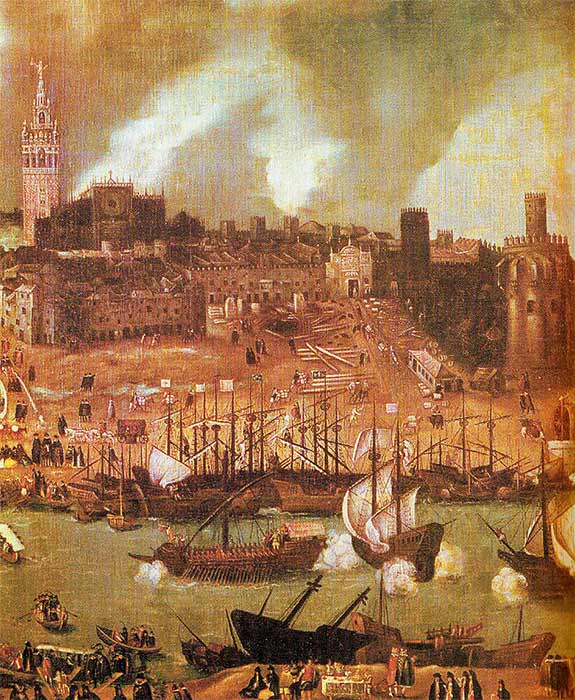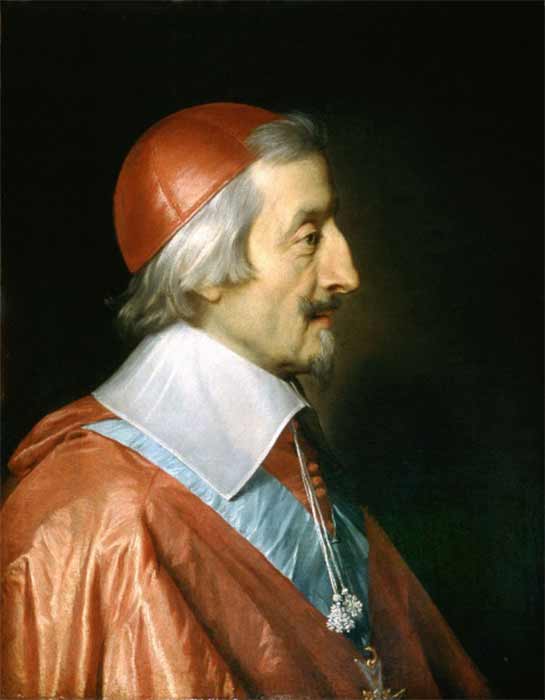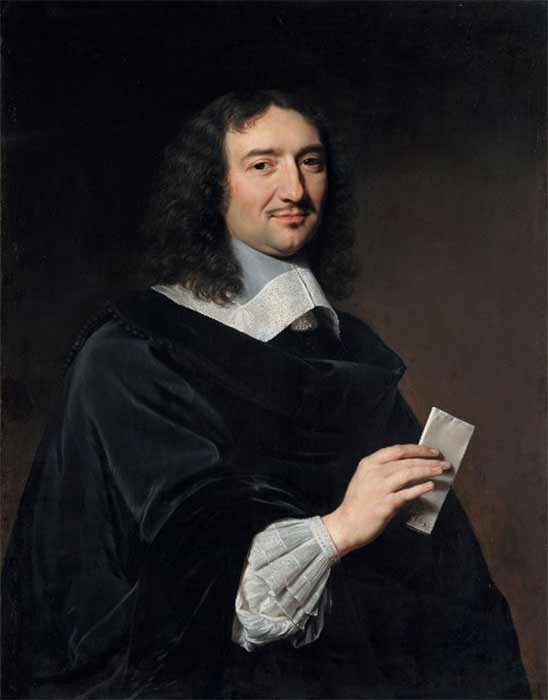
A Centenary Of Modern Naval History 1616 to 1716
History is composed not only of facts, but also of dates and if one needs to pinpoint a chronological beginning to what is considered modern naval history, historians and naval experts all agree on 1616. It was precisely in 1616 that the Portuguese João Baptista Lavanha published the Livro Primeiro de Architectura Naval, a text which actually disappeared for several decades, but was rediscovered in Spain 250 years after its publication.

A shipyard on the river Guadalquivir in 16th century Seville: detail from a townscape by Alonso Sánchez Coello. (Public Domain)
Lavanha's is considered the first ever text on the subject. However, in 1670, 32-year-old Anthony Deane in England also published a book, Doctrine of Naval Architecture, and three years later, in France, the Jesuit Father Pardi published a treatise on naval tactics, for example describing for the first time the forces at play that would veer a vessel on a given course with the wind at abeam, with less advancement than would be the case with the inclination of the hull itself. A few years later, in 1677, another French treatise Architecture Navale saw the light of day, thanks to F. Dassie. The treatise analyzed nothing new compared to its predecessors, but it demonstrated the interest in the topic and the existence of a critical evaluation of the subject, especially in France, which would be at the heart of subsequent studies.
Superpowers Rising
Unfortunately, the 17th century was not without its conflicts, which changed the face of Europe as early as the beginning of the 18th century. At the end pf the 18th century the French Revolution changed the very structure of international relations as the European dynastic ambitions and the territorial expansions coveted by each sovereign became the backdrop for future social and ideological struggles during the following centuries. However, in Europe prior to the French Revolution, France’s power progressively and uninterruptedly expanded from 1616 until 1789, and Russia as well as the Habsburg Monarchy experienced a great rise in military power. France was certainly the forerunner in influencing the progress of science, mathematics, physics and naval design. Under the reign of Louis XIV, the ambition of naval supremacy reached unprecedented levels and the monarch endowed the royal navy with great prestige and power.


Cardinal Richelieu (1642) Musées de la ville de Strasbourg (Public Domain) and Jean-Baptiste Cobert (1666) Metropolitan Museum of Art (Public Domain)
But France had entered the race late, as under Cardinal Richelieu, Secretary of State for Foreign Affairs of France (1624 – 1642), the total of ships numbered 37, compared to England's 133 and Holland's 101. France was lacking in shipyards, but this was remedied under the administration of Jean-Baptiste Cobert (1661 – 1683) who commissioned Holland and Denmark to build French ships. At the same time Colbert instigated a large-scale espionage program. The French fleet increased, but it was not uniform, evident even in the three great French shipyards, where the ships’ designs differed greatly. This necessitated imposing shipwright regulations to standardize designs, from 1670 onwards. Every fortnight inspectors inspected the yards to ensure that the designs were adhered to.
Colbert was the first to make the strange (but very useful) request for a scale model of each ship to be built. The size of the model was not exactly small, but it was equivalent to that of a three-meter (ten-foot) lifeboat. Colbert was up against a staunch conservative mentality, especially in the person of 68-year-old Admiral Duquesne, commander of the French navy. Colbert realized to revitalize the royal navy would not be an easy task, even by spying on other European nations. Louis XIV, although not hindering these innovations, preferred not to venture far from his palace, as he never participated in a naval inspection of his shipyards, nor did he visit any of the ports where the fleet was based. His naval knowledge was limited to what his administrators had told him and on the fleet of scale models (60 small boats given to him by foreign countries) floating in the Versailles canal. The canal, 1800 meters (1.10 miles) long and 62 meters (203 feet) wide, was used by Colbert to test new designs.





